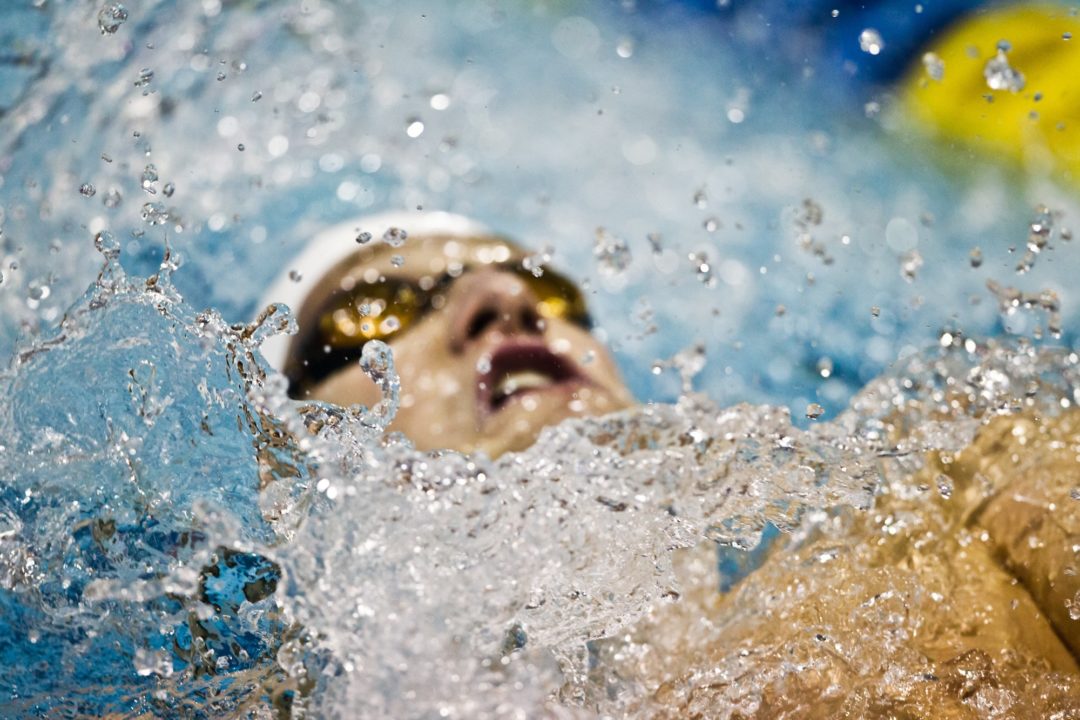Spring training involves a heavy dose of yardage paired with intense dryland. Swimmers jump head first into high-volume practices while managing soreness and fatigue from their general strength and conditioning on land. Proper recovery helps athletes stay healthy and consistent with their training year round. It is not only essential for taper, when peak performance is critical, but also during pre- and mid-season practices, when training volume is higher and the risk for injury potentially greater. Let’s take a look at how you can adjust your recovery methods for this time of year.
Sleep
Sleep is so much more than a restful period in your day. Sleep is the most comprehensive recovery tool at your disposal and is essential to normal cognitive function. While several studies have analyzed its positive effects in sport, the mechanisms by which these changes occur are still not known. It is evident that insufficient sleep leads to negative changes in your glucose metabolism, pain perception, release of stress hormones, recovery time from injury, immunity, and inflammation, among several factors1. Especially in prolonged, submaximal training (i.e. early season high-volume workouts), sleep is critical to your athletic performance. Be disciplined about getting as much sleep the night before morning practices as you do other nights, as this is typically when swimmers accumulate sleep deprivation.
Refueling Post-Workout
With high-volume training comes greater energy expenditure, so you’ll need to calibrate your nutrition accordingly. Always re-fuel within 30 minutes of finishing your workout—ideally with a carbohydrate/protein combination beverage or bar to stimulate protein synthesis and muscular recovery. You will need a slightly higher overall caloric intake than when you were tapering a few weeks ago, but those increases should be due to a greater balanced intake of protein, carbs, and healthy fats, rather than processed foods and sugary beverages.
Hydration
During longer training sessions, you may sweat more and lose more fluid volume as a result. Be vigilant about your hydration and electrolyte replacement during dryland and swimming because it can make a huge impact on your perceived exertion and training performance. Check out this article on dehydration and athletic performance for more details.
Cold Therapy
The jury is still out on the impact of ice baths. Some athletes, myself included, found them useful for recovery from strength training whereas other athletes prefer contrast baths between hot and cold tubs. However, icing a joint or muscle group directly with a classic ice pack is still useful for reducing inflammation. High volume training means highly repetitive movements in the water that can lead to pain and overuse injuries if an athlete’s muscles are excessively fatigued and/or their technique breaks down. 15-20 minutes of direct ice contact with a muscle or joint post-workout can help boost recovery before the next workout.
Foam Rolling Before Dryland
Include foam rolling in your dryland warm up to lengthen out tight muscle tissue that is about to be engaged in intense exercise. Save the stretching for the end of the workout when your muscles are already warm. When everything feels sore during this time of year, consistent foam rolling can be your number one tool to maintain a full range of motion so you can recruit the correct muscle groups during your strength exercises.
If you liked this post, check out more training tips at BridgeAthletic!
References:
 BridgeAthletic works with elite professional, collegiate, and club swimming programs to provide a turnkey solution for dryland training. Led by Nick Folker, the top swimming strength and conditioning coach in the world, our team builds stroke-specific, custom-optimized dryland programs for each of our clients. The individualized workouts are delivered directly to athletes via our state of the art technology platform and mobile applications. Check Nick and BridgeAthletic out as recently featured in SwimSwam.
BridgeAthletic works with elite professional, collegiate, and club swimming programs to provide a turnkey solution for dryland training. Led by Nick Folker, the top swimming strength and conditioning coach in the world, our team builds stroke-specific, custom-optimized dryland programs for each of our clients. The individualized workouts are delivered directly to athletes via our state of the art technology platform and mobile applications. Check Nick and BridgeAthletic out as recently featured in SwimSwam.
 Nick Folker is the Co-Founder and Director of Elite Performance at BridgeAthletic. Nick’s roster of athletes includes 35 Olympians winning 22 Olympic Medals, 7 team NCAA Championships and over 170 individual and relay NCAA championships. Megan Fischer-Colbrie works as the Sports Science Editor at BridgeAthletic. Megan was a four-year varsity swimmer at Stanford, where she recently graduated with a degree in Human Biology.
Nick Folker is the Co-Founder and Director of Elite Performance at BridgeAthletic. Nick’s roster of athletes includes 35 Olympians winning 22 Olympic Medals, 7 team NCAA Championships and over 170 individual and relay NCAA championships. Megan Fischer-Colbrie works as the Sports Science Editor at BridgeAthletic. Megan was a four-year varsity swimmer at Stanford, where she recently graduated with a degree in Human Biology.
The Championship Series by BridgeAthletic is designed to empower athletes with tips from the pros that will help them reach peak performance come race day. We will be covering competition-focused topics such as nutrition, recovery, stretching, and mental preparation.


Good article, thank you!
Good article and great to show to my swimmers (great when they hear it from others). Although individual responses will vary, i have to disagree with foam rolling before dryland. A dryland strength and flexibility training program should strongly focus on textbook technique. So many swimmers perform incorrect technique on movements such as squats and shoulder exercises that this must be a focus. Rolling will increase relaxation but possibly at the expense of an inhibition of neuro-activation that is needed during exercises that should be performed with a maximal focus on technique. Dynamic movements before dryland (and before a race) are definitely preferable than static stretches….so static stretches are the ones that should be done after practice. you don’t want… Read more »